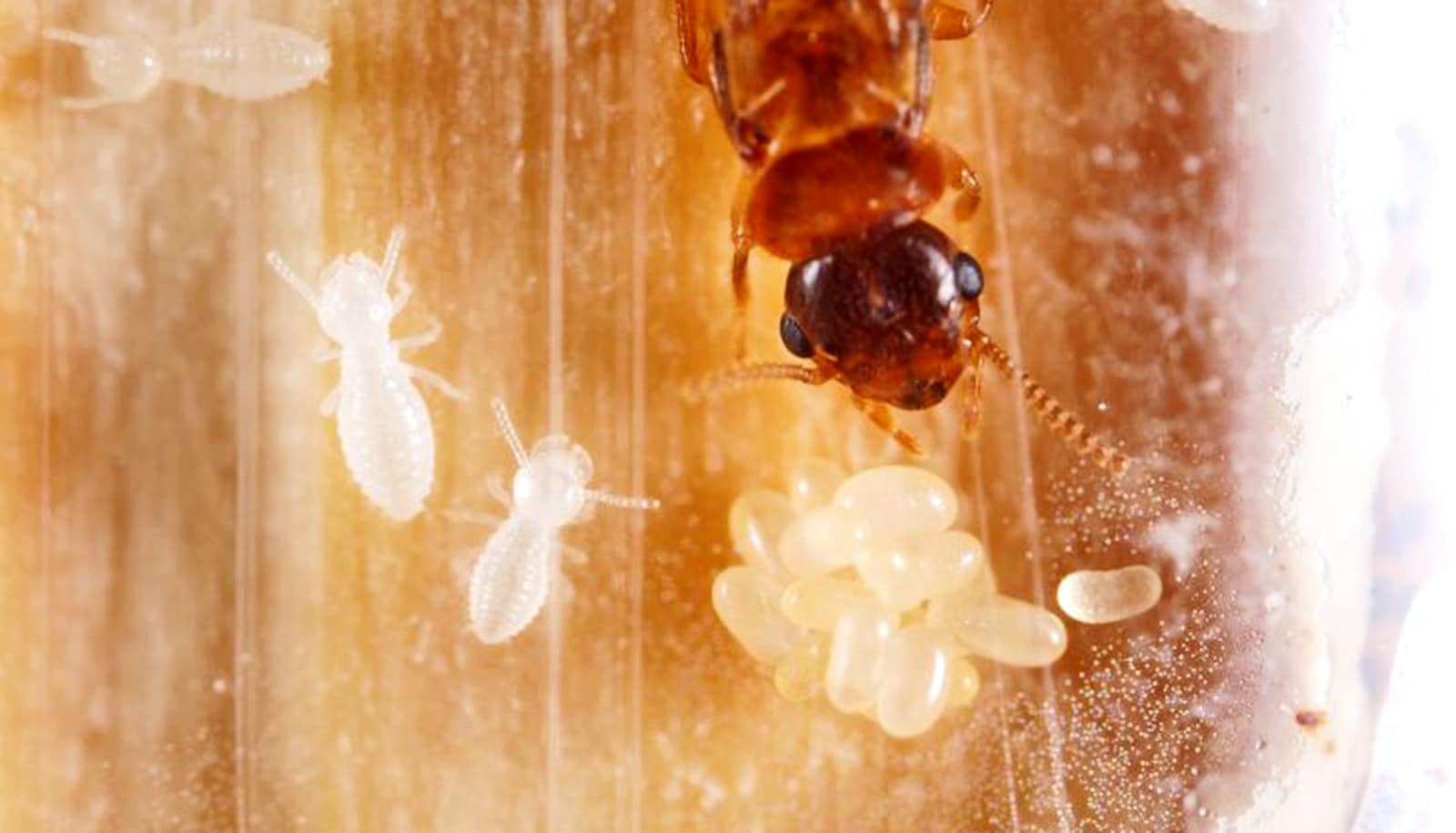 </p>
<p>” data-medium-file=”https://i2.wp.com/entomologytoday.org/wp-content/uploads/2020/08/paraneotermes-simplicicornis-soil-excavation.jpeg?fit=390%2C193&ssl=1″ data-large-file=”https://i2.wp.com/entomologytoday.org/wp-content/uploads/2020/08/paraneotermes-simplicicornis-soil-excavation.jpeg?fit=878%2C435&ssl=1″ loading=”lazy” class=”size-full wp-image-13927″ src=”https://i2.wp.com/entomologytoday.org/wp-content/uploads/2020/08/paraneotermes-simplicicornis-soil-excavation.jpeg?resize=878%2C435&ssl=1″ alt=”Paraneotermes simplicicornis soil excavation” width=”878″ height=”435″ srcset=”https://i2.wp.com/entomologytoday.org/wp-content/uploads/2020/08/paraneotermes-simplicicornis-soil-excavation.jpeg?w=1000&ssl=1 1000w, https://i2.wp.com/entomologytoday.org/wp-content/uploads/2020/08/paraneotermes-simplicicornis-soil-excavation.jpeg?resize=390%2C193&ssl=1 390w, https://i2.wp.com/entomologytoday.org/wp-content/uploads/2020/08/paraneotermes-simplicicornis-soil-excavation.jpeg?resize=768%2C381&ssl=1 768w, https://i2.wp.com/entomologytoday.org/wp-content/uploads/2020/08/paraneotermes-simplicicornis-soil-excavation.jpeg?resize=161%2C80&ssl=1 161w” sizes=”(max-width: 878px) 100vw, 878px” data-recalc-dims=”1″/></p>
<p id=)
By Leslie Mertz. Ph.D.
Not only are some species of animals social, but they are also able to collaboratively build often elaborate structures, such as the nests of paper wasps, honeybees, and termites. There are no building plans or construction foremen, so how do they do it?

It turns out that individuals have very simple tasks to do, and they perform those tasks over and over again without knowing anything about how the structure will ultimately look, and without any central direction. They do those tasks in response to some stimulus, which might be a change in odor or light. The stimulus may trigger them to work in a certain location, whether expanding a current nest, adding tunnels to food sources, or building an entirely new nest.
This nest-building activity fascinates Nobuaki Mizumoto, Ph.D., who just spent two years in Arizona observing and investigating the behavior of subterranean termites and discovering some interesting details about their tunneling activities. He conducted the work as a postdoctoral researcher at Arizona State University’s School of Life Sciences and is now back in his native Japan, where he is continuing his research into social-insect behavior as a postdoctoral research fellow at the Okinawa Institute of Science & Technology Graduate University. He reports on some of his findings in a new paper published this week in the Annals of the Entomological Society of America.
</p>
<p>” data-medium-file=”https://i0.wp.com/entomologytoday.org/wp-content/uploads/2020/08/nobuaki-mizumoto.jpg?fit=390%2C305&ssl=1″ data-large-file=”https://i0.wp.com/entomologytoday.org/wp-content/uploads/2020/08/nobuaki-mizumoto.jpg?fit=878%2C686&ssl=1″ loading=”lazy” class=”size-medium wp-image-13933″ src=”https://i0.wp.com/entomologytoday.org/wp-content/uploads/2020/08/nobuaki-mizumoto.jpg?resize=390%2C305&ssl=1″ alt=”Nobuaki Mizumoto, Ph.D.” width=”390″ height=”305″ srcset=”https://i0.wp.com/entomologytoday.org/wp-content/uploads/2020/08/nobuaki-mizumoto.jpg?resize=390%2C305&ssl=1 390w, https://i0.wp.com/entomologytoday.org/wp-content/uploads/2020/08/nobuaki-mizumoto.jpg?resize=768%2C600&ssl=1 768w, https://i0.wp.com/entomologytoday.org/wp-content/uploads/2020/08/nobuaki-mizumoto.jpg?resize=102%2C80&ssl=1 102w, https://i0.wp.com/entomologytoday.org/wp-content/uploads/2020/08/nobuaki-mizumoto.jpg?w=1000&ssl=1 1000w” sizes=”(max-width: 390px) 100vw, 390px” data-recalc-dims=”1″/></p>
<p id=)
While in Arizona, Mizumoto was especially curious about the different types of tunneling behavior he witnessed among termites. In two species—the subterranean termite, Heterotermes aureus (family Rhinotermitidae), and the long-jawed desert termite, Gnathamitermes perplexus (family Termitidae)—each termite worker used its mandibles to grab a bit of sand from the end of an under-construction tunnel, carried it outside to discard it, and then returned to take the next load. Mizumoto calls that individual transportation. “But when I looked at the Paraneotermes simplicicornis, this species had a novel behavior,” he says, referring to the desert dampwood termite (family Kalotermitidae). “In this species, some individuals go to the ends of the tunnels, grab sand with their jaws, and then kick it back like a dog to the individual behind them, and that individual takes over and kicks it back farther, so it is a kind of bucket-brigade behavior.”
Mizumoto wondered if the disparity in the individual transportation versus kicking behavior had something to do with the size of the termites, because the workers in the two individual-transportation species were noticeably smaller than the kicking termites. To figure that out, he looked at the future kings and queens, or colony founders, which are larger than the workers. He observed that the colony founders of one of the individual-transportation species—the long-jawed desert termites—were even larger than those of the kicking termites. So, Mizumoto posited, if size determines this behavior, then he should see different tunneling methods in workers compared to reproductives within a species.
 and the colony founders of the subterranean termite <em>Heterotermes aureus </em>(HF), the desert dampwood termite <em>P. simplicicornis </em>(PF), and <em>G. perplexus</em> (GF). Size ranges are also shown in the graph: filled circles are colony founders of<em> P. simplicicornis</em>; unfilled circles are colony founders of <em>G. perplexus</em> and <em>H. aureus</em>, which exhibit a different tunneling behavior from<em> P. simplicicornis</em>; and triangles areworkers of <em>G. perplexus</em>. (Image originally published in Mizumoto et al 2020, <em>Annals of the Entomological Society of America</em>)</p>
<p>” data-medium-file=”https://i0.wp.com/entomologytoday.org/wp-content/uploads/2020/08/termite-size-chart.jpeg?fit=390%2C274&ssl=1″ data-large-file=”https://i0.wp.com/entomologytoday.org/wp-content/uploads/2020/08/termite-size-chart.jpeg?fit=878%2C617&ssl=1″ loading=”lazy” class=”wp-image-13928 size-full” src=”https://i0.wp.com/entomologytoday.org/wp-content/uploads/2020/08/termite-size-chart.jpeg?resize=878%2C617&ssl=1″ alt=”termite size chart” width=”878″ height=”617″ srcset=”https://i0.wp.com/entomologytoday.org/wp-content/uploads/2020/08/termite-size-chart.jpeg?w=1000&ssl=1 1000w, https://i0.wp.com/entomologytoday.org/wp-content/uploads/2020/08/termite-size-chart.jpeg?resize=390%2C274&ssl=1 390w, https://i0.wp.com/entomologytoday.org/wp-content/uploads/2020/08/termite-size-chart.jpeg?resize=768%2C540&ssl=1 768w, https://i0.wp.com/entomologytoday.org/wp-content/uploads/2020/08/termite-size-chart.jpeg?resize=114%2C80&ssl=1 114w” sizes=”(max-width: 878px) 100vw, 878px” data-recalc-dims=”1″/></p>
<p id=)
No such distinction existed. “What I found is that the workers and founders have the same tunneling behaviors within the species,” he says, noting that this was true even among long-jawed desert termites that had small workers and much larger colony founders. This suggests that tunneling behavior is an inherited trait and may go back to a shared ancestor between the two individual-transportation species, while the third species that engages in kicking behavior branched off the evolutionary tree earlier.
Mizumoto hypothesized that other social insects, such as ants, likely have inherited tunneling behaviors within species. He notes that inheritance could possibly come to bear in other social hymenopterans, including honey bees and paper wasps, but for now, he is sticking with termites. “My future plan is to do comparative analyses of tunneling behavior across all of the termite species to determine the evolutionary trajectory of termite collective nest-building.” By understanding the underlying individual roles in collective activities, he says, scientists will gain a better appreciation for the evolution of behavior, and how social insects can repetitively perform simple tasks and ultimately construct complex structures.
In Nobuaki Mizumoto’s research on the different types of tunneling behavior among termites, he observed that, in two species—the subterranean termite, Heterotermes aureus (family Rhinotermitidae), and the long-jawed desert termite, Gnathamitermes perplexus (family Termitidae)—each termite worker used its mandibles to grab a bit of sand from the end of an under-construction tunnel, carried it outside to discard it, and then returned to take the next load. He calls that individual transportation. “But when I looked at the Paraneotermes simplicicornis, this species had a novel behavior,” he says, referring to the desert dampwood termite (family Kalotermitidae). “In this species, some individuals go to the ends of the tunnels, grab sand with their jaws, and then kick it back like a dog to the individual behind them, and that individual takes over and kicks it back farther, so it is a kind of bucket-brigade behavior.” (Video originally published supplementary to Mizumoto et al 2020, Annals of the Entomological Society of America)
Leslie Mertz, Ph.D., writes about science and runs an educational insect-identification website, www.knowyourinsects.org. She resides in northern Michigan.






